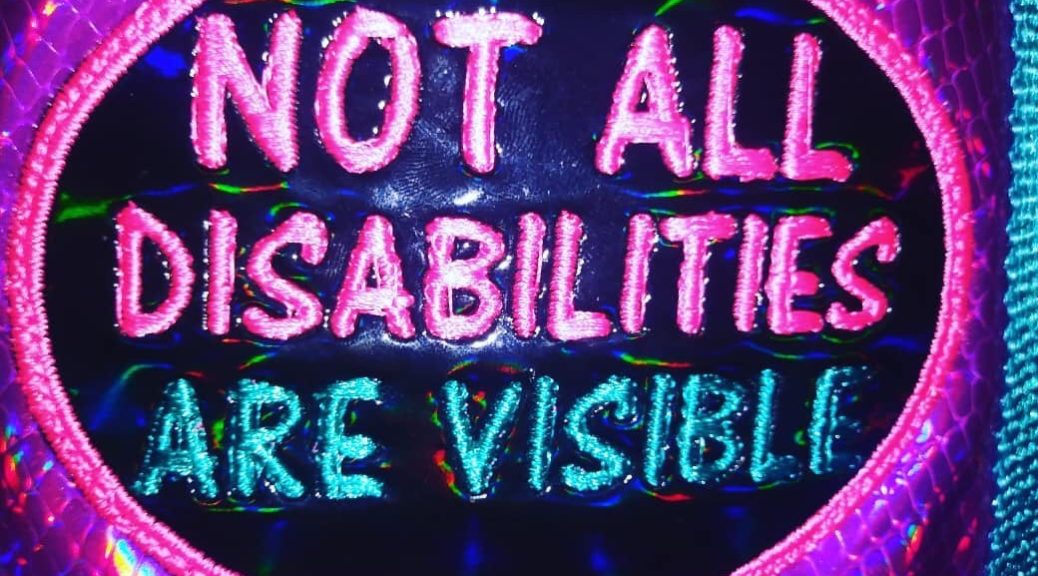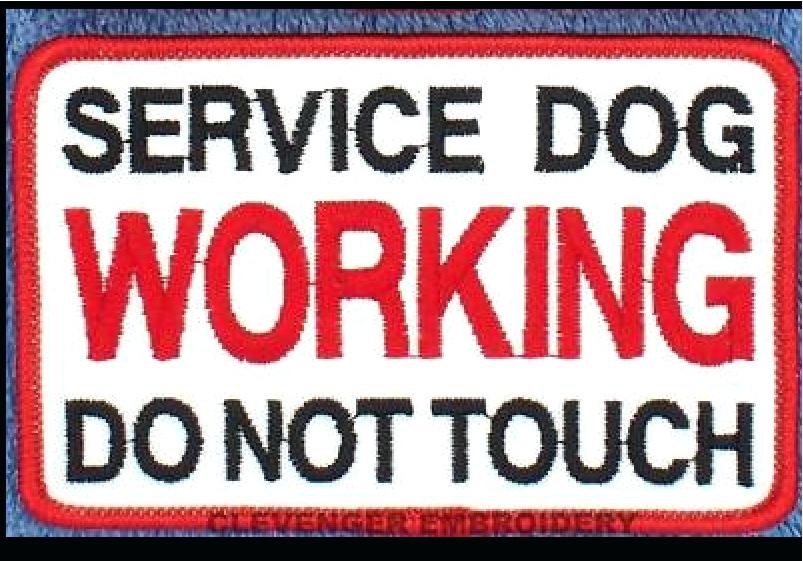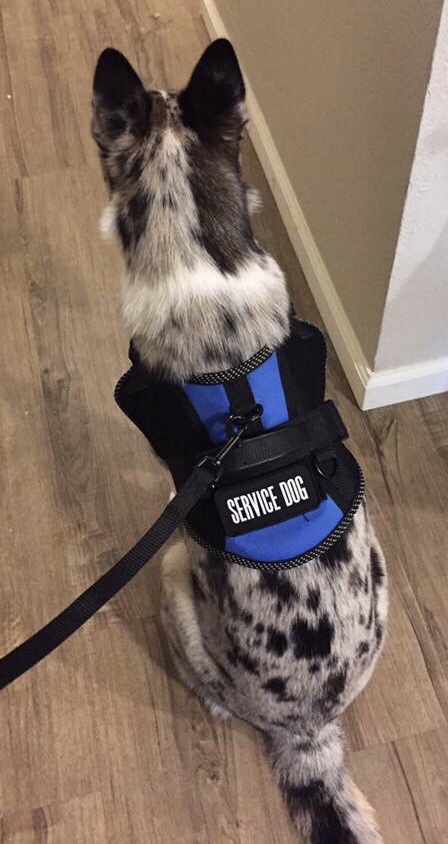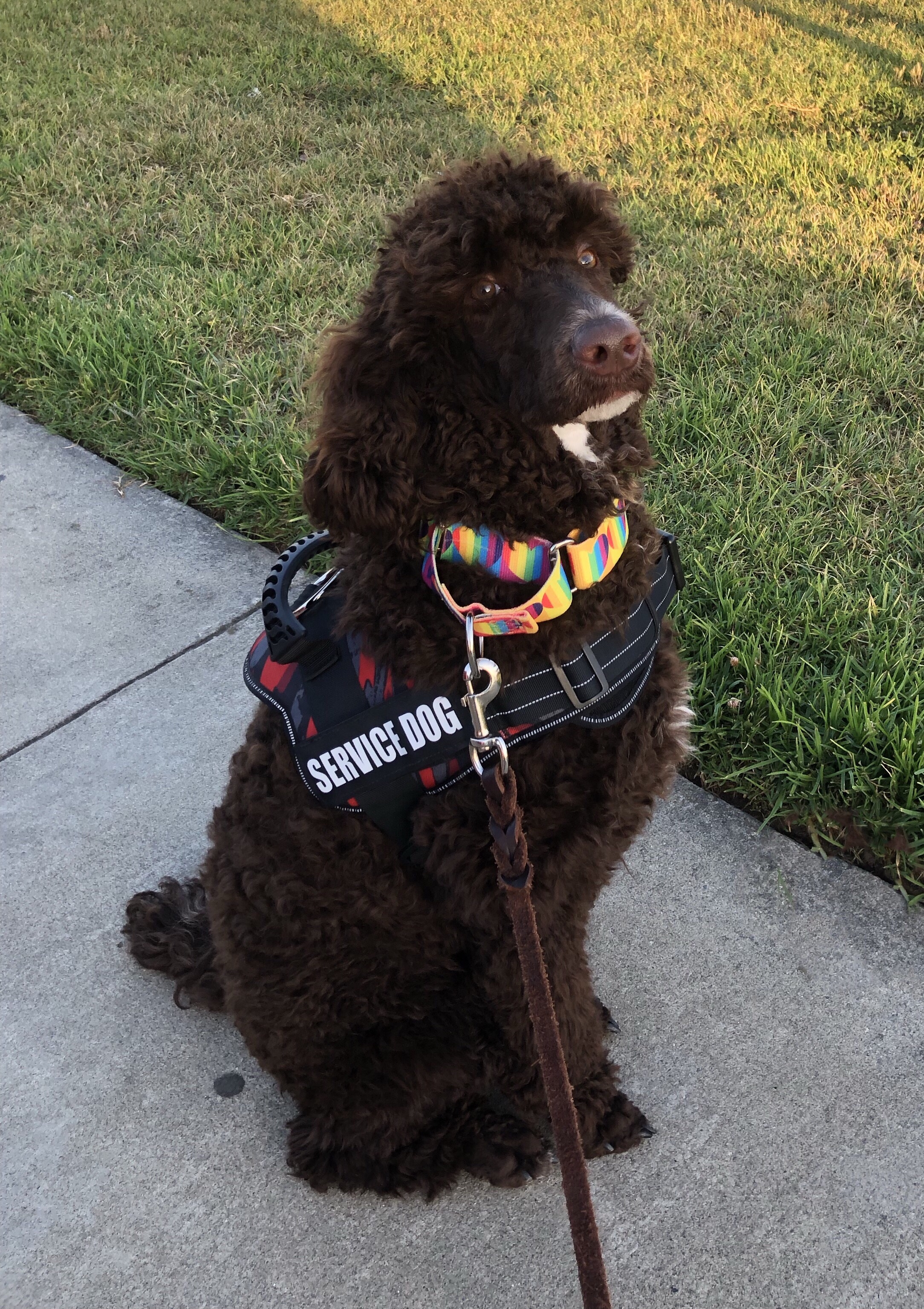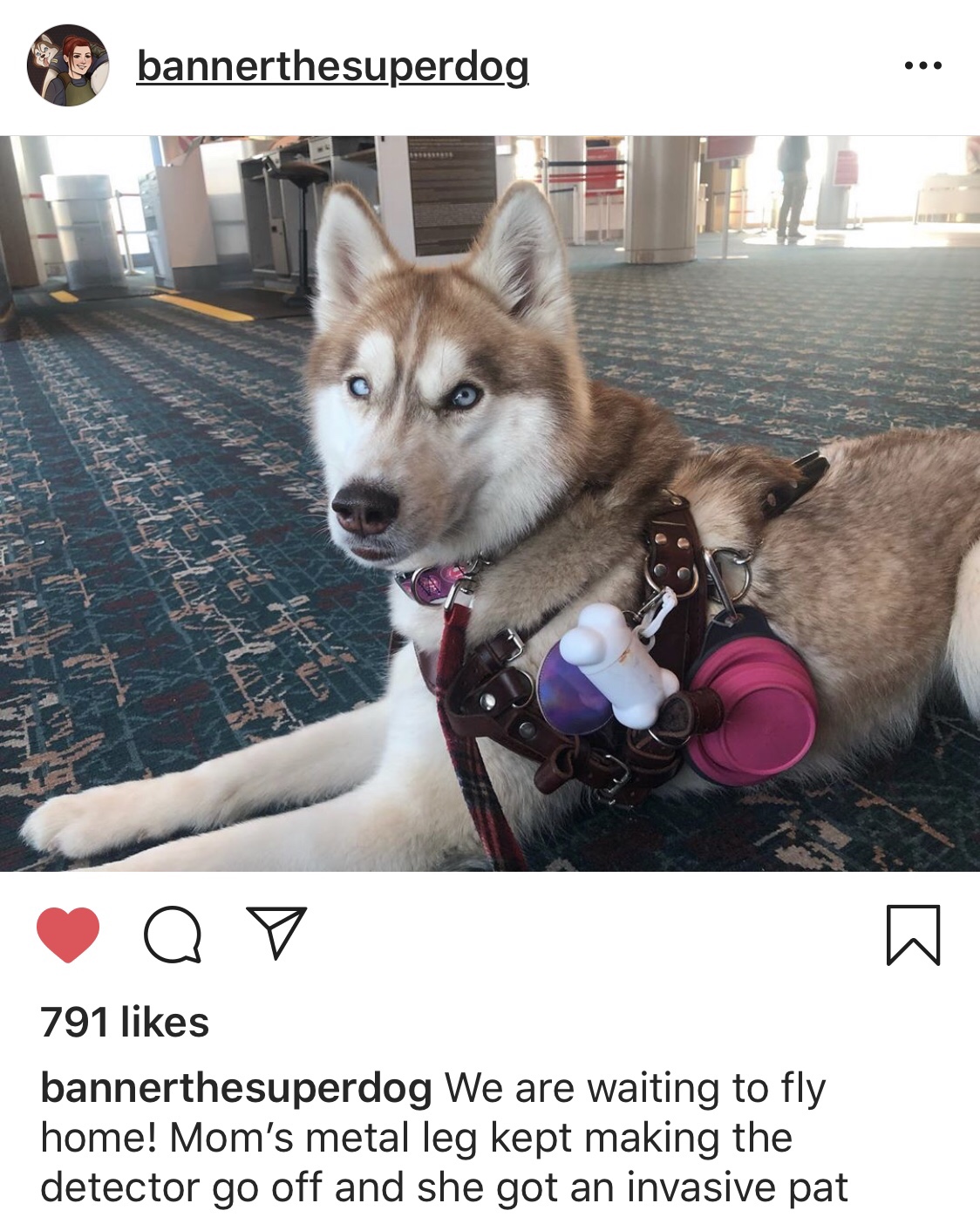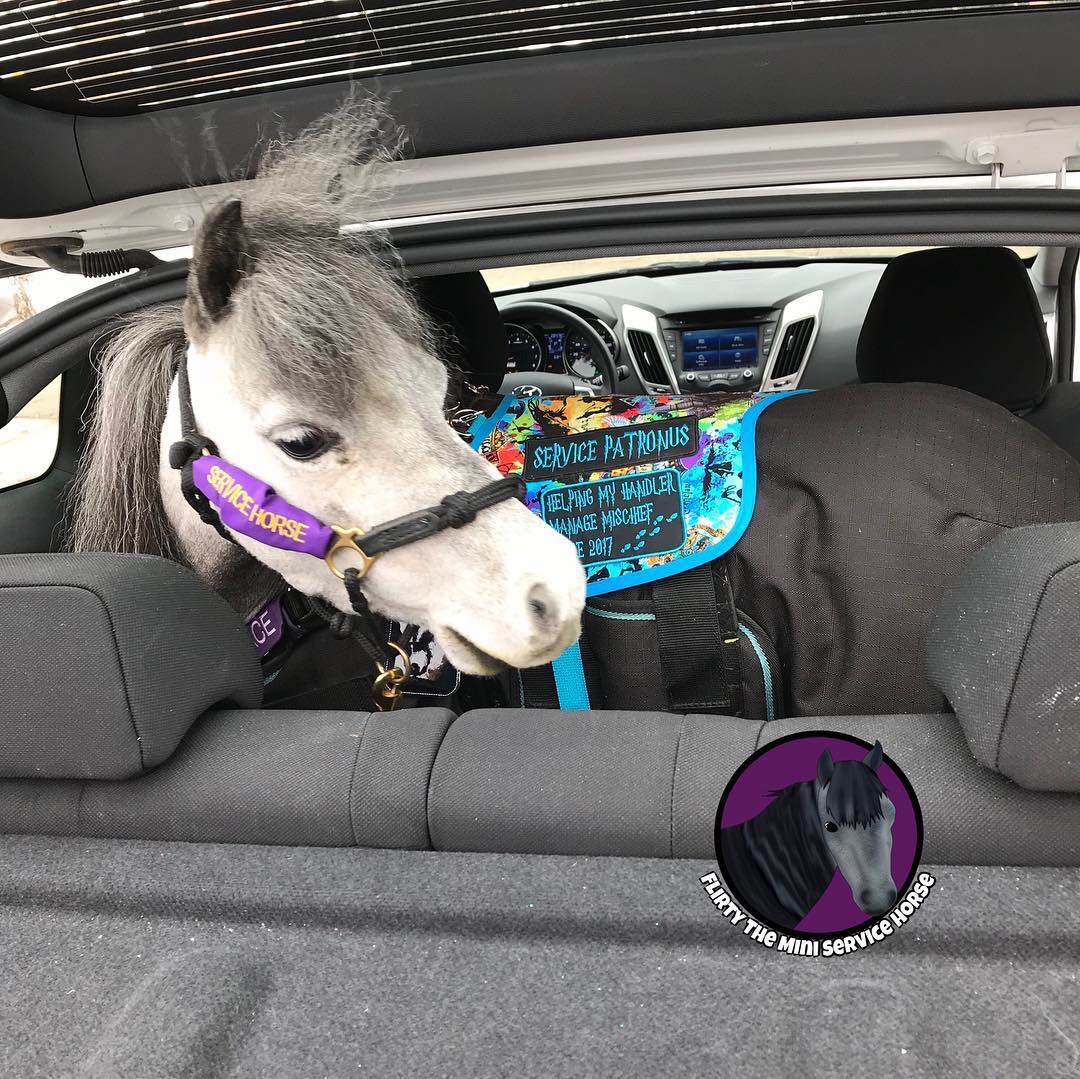Miss Paw’rt One? Read it Here!
(Feature Image: Custom Patch by Jubalee’s Vests & Patches)
You’ve determined that you could benefit from having a service dog. What’s next? You’ve got a few options.
You can look into getting a program dog. A program dog is one that has been raised in a program specifically designed to select and train service dogs for certain groups of people. You’ve got Guide dogs for the blind, as an example. These dogs have been specially selected from puppies and have been put through their extensive training program for up to two years, to learn how to do their job most effectively. Not all puppies make the cut, but the ones that do can run you upwards of $25k-$50k depending on where you get them and what for. In the case of Guide Dogs For The Blind, they are a free service run on donations and volunteers. However, in other programs there can be a large cost associated.
Don’t get discouraged. I know that’s a really high price tag! But keep reading.
There are breeders who have done a lot of work with their lines to produce service dog prospects. They are able to tell their new puppy owners which ones would do best as a service dog or therapy dog. Usually they pick one or several for you to choose as your SD puppy. These guys can go for normal breeder prices, or slightly higher, about $1k-$2k. If you go this route, do your due diligence on the breeder you choose to be sure that they have produced service dog quality dogs before you pay their prices. Some breeders are known for producing great SD’s.
Adopt! Shelters are full of wonderful dogs looking for homes that could fit your personality and lifestyle perfectly. I do caution you when doing this as there are many rescue dogs that come with baggage. If that’s the case you’ll end up spending a long time fixing problem behaviors before you can even consider training tasks or going in public. The low cost of the dog could be made up in behavior modification cost.

The second two options verify that you can owner-train your service dog. By definition it’s a dog that’s individually trained to mitigate your disability after all. So you can choose to do it yourself and train your own tasks. There is a lot of material on the web to help you do so.
Or you could hire me! I’ve trained medical, mobility, and psychiatric service dogs. Shameless plug.
As a general rule, your service dog will be considered a Service Dog in Training for around the first two years. It takes them time to mature or settle in to their new home and lifestyle. Obedience work can take several months, and tasks can take up to two years to become 100% automatic or “bomb proof”.
Which is the perfect time to mention this: If you see a Service Dog team out in public working – do not disturb the dog. Ever.
I know I just mentioned them being bomb proof – but you will never be able to tell which ones those are. And? Let’s face it, they’re dogs and they have personalities too. They’re working and need to be left alone.
There are some handlers who don’t mind talking to people if you have questions. Address the handler in a friendly manner and ask if you may ask about their dog. If they say no? Politely walk away. They are not being rude or mean, they are trying to go about their normal life. They may be having an issue with their health or disability that day. They have a service dog for a reason and not all reasons are visible or obvious to the outside world.
Do not ask to pet the dog. I’m just going to make that a rule you teach yourself and your children. Not all dogs need to be pet. Especially service dogs. The majority of them can get distracted and break concentration and could miss a mark or an alert which could be very dangerous or even life-threatening to their handler.
Teach your children to not address the dog. They may talk to you about the dog. But I would disallow them to make any noises or calls to the dog who is working. Again, this could be life-threatening to their handler! Teach them young, so we have more knowledgeable adults later on.

To have a service dog there are some general ethical guidelines to follow. The dog must be in perfect health and stature. They should not have any disabilities themselves. If they were in human form and needed assistance themselves, do not make them a service dog for you.
For mobility purposes, size definitely matters! Light mobility tasks require the dog be at least 33% of your body weight. Heavy mobility requires your dog be 50% your body weight. Keep that in mind when choosing a young dog.
These dogs begin work as a puppy (or as soon as you get them) can take up to two years to fully train and can work until they’re about 8 or 9 years old. So if you’re getting an adult shelter dog, understand that you may only get a few years of good work out of them before retiring them and beginning a new SD prospect.
Breed can play a role in longevity of their career as well. Some of your much bigger dogs don’t live nearly as long as medium or smaller dogs. So you might retire them at 6 or 7 instead. It is unethical to ask an old dog to work for up to 8 hours a day. They age faster than us and it’s hard on them.
And, yes, you can have more than one SD. Some handlers have disabilities that require the work of two dogs. Their tasks may be trained differently, and this is slightly more rare.
Lastly, any breed of dog can be a service dog. So don’t be too quick to laugh at that Pomeranian with a SD vest on. He may alert to an oncoming anxiety attack. You just never know.
Remember – not all disabilities are visible! And not all service dogs work in vests to label who they are. They are not required to and it gets hot in certain places!
Published by Amy Noble on 8/7/19
Amy is an Animal Behaviorist in Monterey Ca, with over Thirty years of experience and active knowledge working with animals. She has helped clients train Medical Alert, Mobility, and Psychiatric Service Animals, and is an AKC CGC Evaluator.

